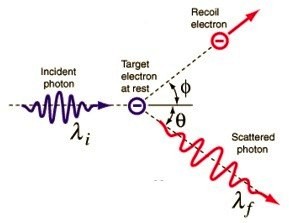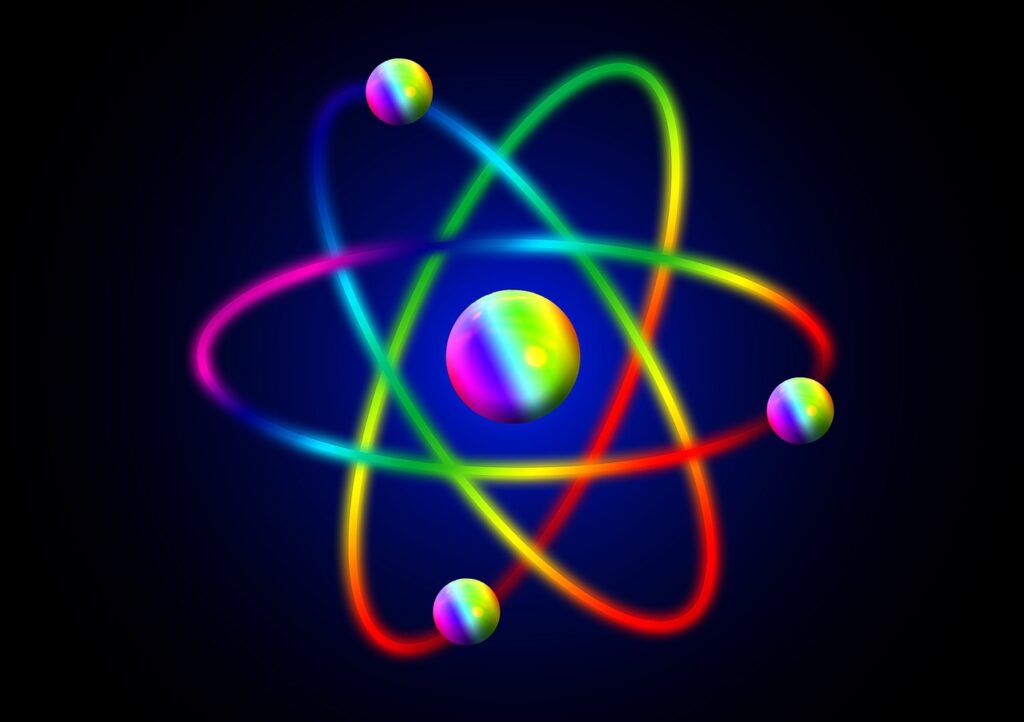The Compton effect is a physical phenomenon that describes how X-rays interact with electrons. It is one of the pieces of evidence that led to the establishment of quantum theory.
Index
The Experiment
The Compton effect was observed when X-rays were made to interact with matter.
The experiment involved a beam of X-rays made to scatter off some form of matter. It was noticed that the scattered X-rays had a change in wavelength which depended on the angle of scattering.

This couldn’t be explained by classical mechanics. According to classical mechanics, X-rays were waves with a certain adjustable intensity. If this intensity was made low enough, they should not interact with matter, in this case electrons, and hence there would be no change in wavelength.
Compton’s Explanation
Compton performed his own series of experiments involving X-rays scattering off graphite at various angles. Since the change in wavelength could not be explained by classical mechanics, he developed an explanation that treated X-rays as though they consisted of particles called photons.
It is now simpler to visualize why the wavelength changes. When X-rays interact with electrons, the photons come and collide with the electrons, making them move.
As in most collisions, the photon now loses some momentum to the stationary electron. As a result, the photon loses energy.

This loss in energy is visualized by the change in wavelength.
Compton provided the formula in 1923. To arrive at this, Compton studied the collision between the photon and the electron. He used relativistic expressions for their energies and momenta.
Further, he used the fact that energy and momentum are conserved (i.e. cannot be created or destroyed) for these two particles together to arrive at the final expression for the change in wavelength.
Mathematical Formula
We take the initial and final wavelengths of the X-rays to be λ and λ’ respectively. θ is the angle at which scattering is observed. The relevant physical constants are:
1. The mass of the electron me
2. The speed of light c
3. Planck’s constant h.
We can now describe the change in wavelength as

This statement means that the change in wavelength is minimum and zero in the forward direction (θ = 0°) and maximum in the backward direction (θ = 180°).
For all other angles, the value is somewhere in between. Also, it can be seen that the wavelength is either unchanged or decreases, but never increases.
Legacy
The Compton effect was an important piece of evidence of “wave-particle duality“. This means that matter and radiation can act both as particles and as waves depending on the situation of the experiment. Along with other such experiments in the early 20th century, this led to the development of quantum mechanics, which studies how matter and radiation behaves at the smallest level.
The Compton effect was later generalized to Compton scattering, a phenomenon which describes how photons in general interact with matter. One example is inverse Compton scattering, where the photon gains, instead of losing, energy from matter. It is observed at the event horizon of black holes.
This effect is one of many important ones for particle physicists to know when it comes to the interaction of photons with matter.

